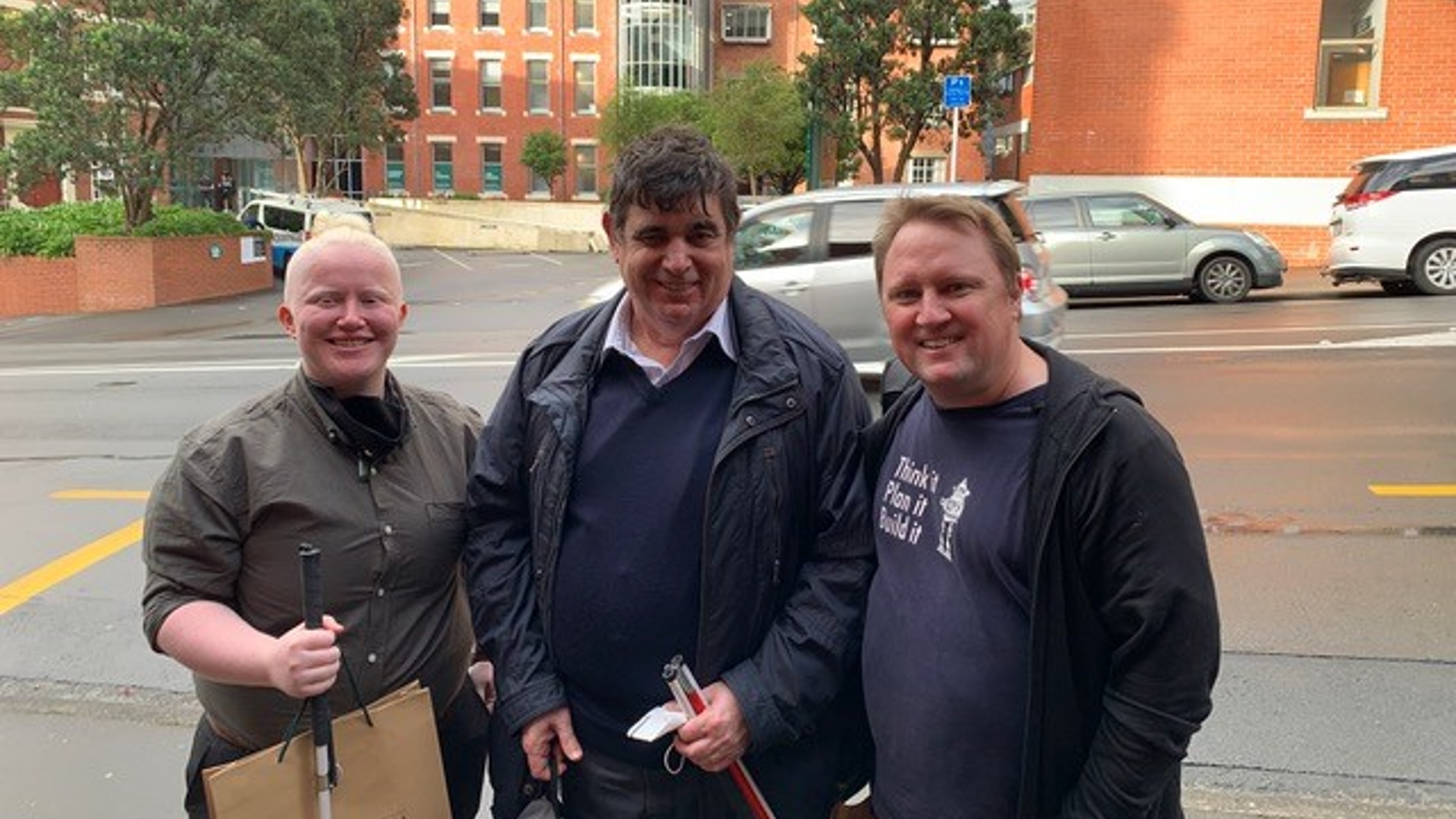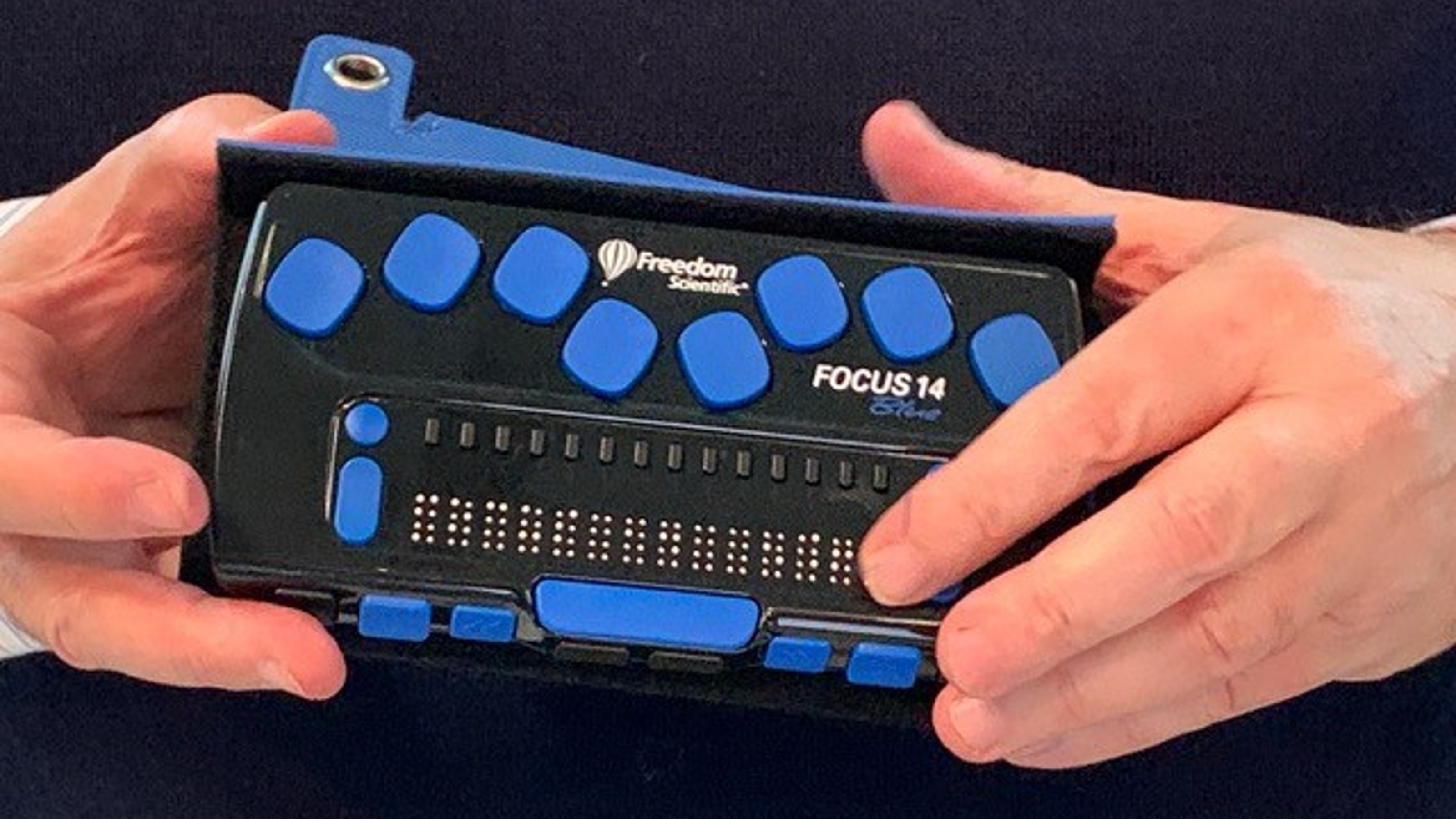Bridging the digital divide on Global Accessibility Awareness Day
On Thursday May 19 2022, Te Herenga Waka—Victoria University of Wellington celebrated Global Accessibility Awareness Day (GAAD) by hosting a special guest lecture for our User Experience Engineering students.

GAAD is dedicated to raising awareness for digital access and inclusion of more than one billion people with disabilities worldwide. The focus of the talk was prioritising accessibility as a core requirement for digital product development.
Thomas Bryan and Bee Tapara were our guest speakers who generously shared their personal stories to highlight the importance of engineering for accessibility.
Thomas, who is blind, is a contractor with over 30 years of experience advocating for accessibility and advising organisations about how they can make goods and services accessible for all. He is also a member of Blind Citizens NZ, Greater Wellington Public Transport Advisory Group, a board trustee for ABLE (NZ’s leading provider of media access services) and one of two country delegates to the World Blind Union.
Thomas shared some insight into the difficulties he encounters when interacting with digital tools as a blind person, and how this can be rectified.
“I would love to be able to access and complete tasks that most take for granted. Many appliances are becoming more and more inaccessible due to their controls or lack of controls.
“For example, it took me ages to find a new washing machine that I could use. It’s not perfect and there are many functions I can’t access, all because of the user interface, touch screens, limited tactile controls, and limited tones.
“An appliance doesn’t need to talk or be controlled via a smartphone, but they do need to have key universal design features that mean everyone can access it. A great example is the smart speaker. This tool can assist in giving access to goods, services, and information for everyone and help to bridge the digital divide.
“If every bus stop had AI built in, everyone could find out when the next bus is and even where to get off. If every ATM had AI, everyone could give voice commands to access their bank information.”
Bee Tapara is a current student at Te Herenga Waka—Victoria University of Wellington born with a genetic based disability which significantly impacts their vision. They shared the motivation behind their pursuit of a computer science degree and their hopes for the future of accessible software development.
“Born legally blind, I have been utilising technology since my early childhood to allow me a chance at independence.
“Common digital barriers I experienced early on could be overcome the aid of assistive technology but as I progressed through my education, the gaps became wider. This, I think, is indicative of a wider survivorship bias, and was the spark that first fuelled my interest in coding.
“We’re beginning to see a shift in design philosophy when it comes to how accessible software is both being developed and implemented, however the lack of a ‘for us, by us’ attitude by many companies is undermining meaningful change for end users of accessible software.
“The ability to write, proof, test and run code with the assistive technology I currently have is an incredibly clunky and often agitating experience, and this isn’t something unique to coding. If I decide to continue my studies after my Bachelor's degree, it is an area I would love to dedicate some time and resources to exploring.
“The most important step in the development of anything in a digital space is seeing accessibility becoming less of an afterthought and more a cornerstone of the development process.
“In a way, I’ve had to build the stairs as I’ve climbed them, and my hope is that those who follow me might only have to add a handrail.”
We also spoke to Brett Challacombe-King, Adaptive Technology and Digital Adviser for Te Amaru—Disability Services, who highlighted the importance of utilising the built-in accessibility features which are already available to us when developing software.
“Most development environments these days have built-in accessibility features and APIs to handle all the common interactions. If you use the ones in the environment you are working in you can streamline the whole development process with the accessibility being handled for you. The easiest way to create an insurmountable accessibility barrier is to ‘reinvent the wheel’ by not using what is already there for you to use.”
Te Amaru—Disability Services is the leading provider of disability advice, expertise, and support for the University, working in partnership to strengthen the culture of inclusion and accessibility in the digital and physical environments, and ensure students can fully participate and achieve their goals during their studies. Further information about what they provide can be found on the Te Amaru—Disability Services website.
The video of the guest lecture is available to watch here.

From left to right: Computer Science student Bee Tapara, accessibility advocate Thomas Bryan, and Software Engineering lecturer Craig Anslow.

The Braille digital device that Thomas Bryan uses to help bridge the digital divide.
